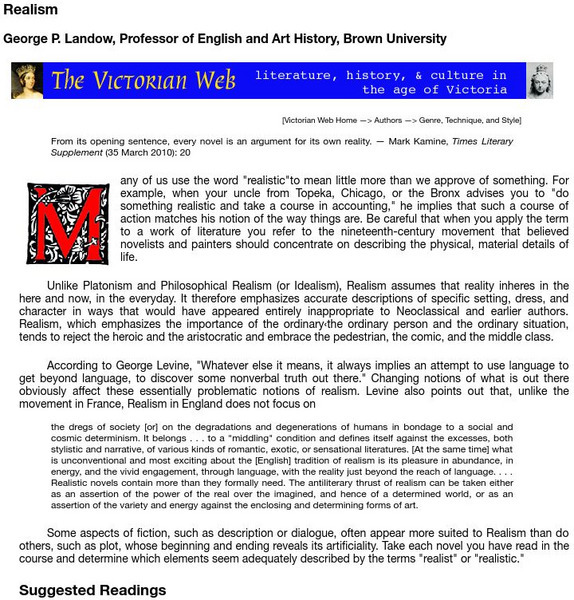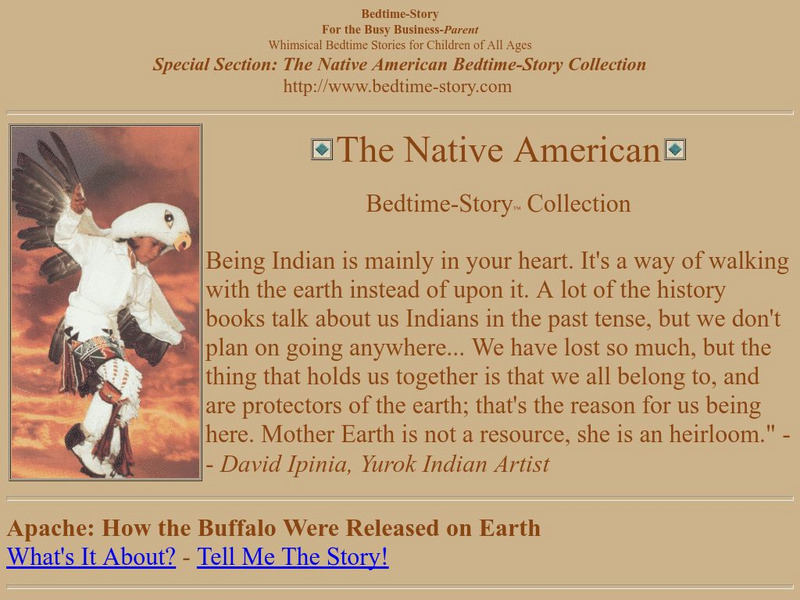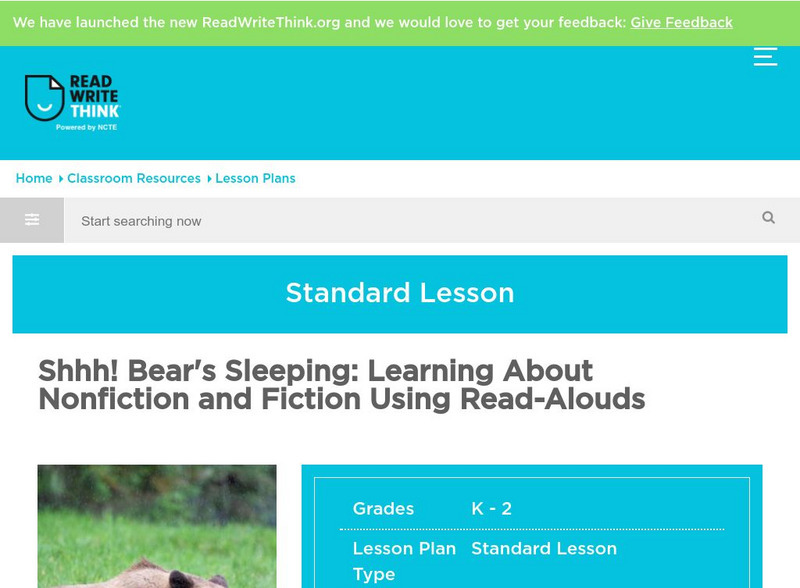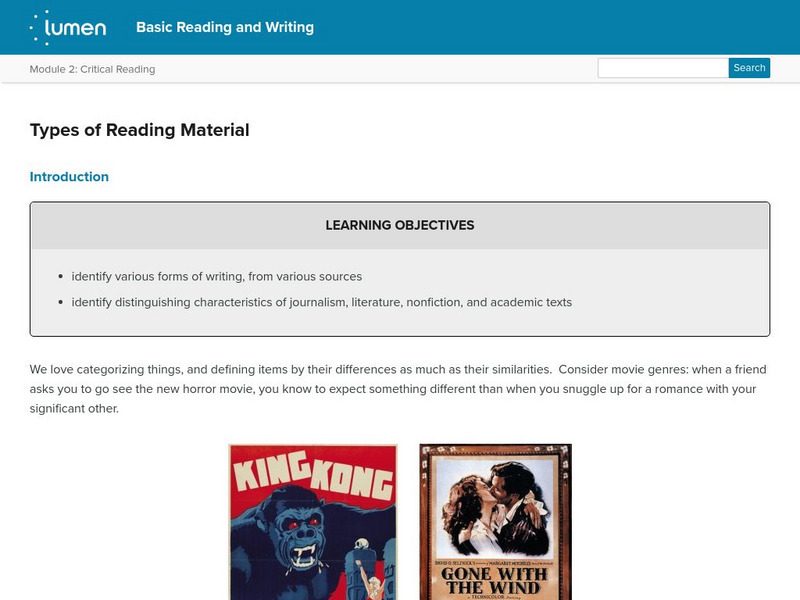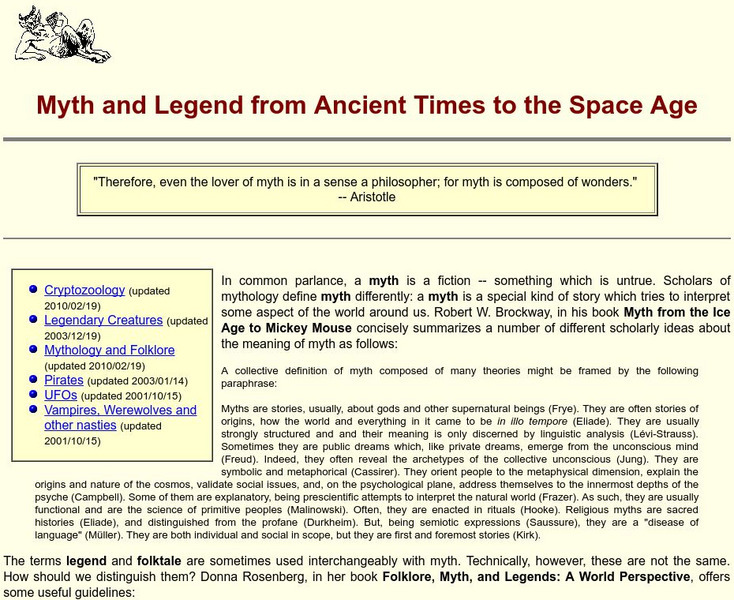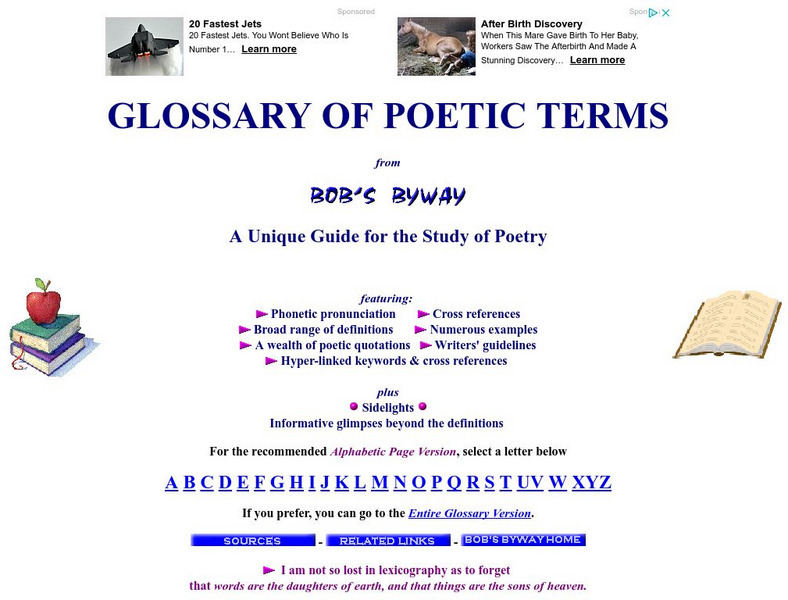Hi, what do you want to do?
Harold D. Underdown
The Use of Visual Elements to Tell a Better Story
Short article gives excellent tips concerning how to use visual elements to enhance a written story. Article was written specifically for children's literature, but can also apply to other genres as well.
Georgia Department of Education
Ga Virtual Learning: Time Periods [Pdf]
The date, historical context, genre/style, content, and effect of several different time periods including: Puritan Times, Rationalism/Age of Enlightenment, Romanticism, Realism, Modernism, and Contemporary/Postmodernism.
Other
A Thousand Deaths by Jack London
This site is from Gaslight of the Mt. Royal College. The site is an internet discussion list that reviews one story a week from all sorts of genres. This particular site provides a short story penned by Jack London during his college years.
Blackdog Media
Classic Reader: The Evil Shepherd by E. Phillips Oppenheim
This is the full text of the novel The Evil Shepherd by E. Phillips Oppenheim; a former defense attorney turned righteous crusader is the hero of this blockbuster novel from an early master of the thriller genre.
Georgia Department of Education
Ga Virtual Learning: American Literary Time Periods Chart (Pdf)
This chart features the six American Literary Time Periods: Puritan Times (to 1750), Rationalism/Age of Enlightenment (1750-1850), Romanticism (1800-1850), Realism (1850-1900), Modernism (1900-1950), and Contemporary/Postmodernism...
Victorian Web
The Victorian Web: Realism
This Victorian Web site defines realism as used in literature and as a "nineteenth-century movement that believed novelists and painters should concentrate on describing the physical, material details of life."
Shmoop University
Shmoop: Animal Farm Analysis: Literary Devices in Animal Farm
This site provides a literary analysis of Animal Farm by George Orwell using the literary devices in the novel including symbolism, imagery, allegory, setting, point of view, genre, tone, writing style, plot analysis and more.
University of Victoria (Canada)
The U Vic Writer's Guide: Literary Term: Fable
The University of Victoria's English department gives a comprehensive definition of fables. Example included.
Other
Anglo Saxon Period: Characteristics of Poetry
This concise survey of Anglo-Saxon poetry is part of a larger site in English for Chinese university students.
National Endowment for the Humanities
Neh: Edsit Ement: Fable and Trickster Tales Around the World
The lessons presented in this website "introduce children to folk tales" and how these folktales are changed and affected by generational and cultural values. Includes several links to further related information on folktales, fables,...
Georgetown University
Georgetown University: Edgar Allan Poe (1809 1849)
This site is a professor's guide for students. This guide features information on how to distinguish between Poe and his narrators in his stories.
Other
Native American Bedtime Story Collection
This site provides eleven short stories based on different Native American stories. Stories from different tribes such as Navajo and Lakota.
ReadWriteThink
Read Write Think: Shhh! Bear's Sleeping: Learning About Nonfiction and Fiction
Students explore the distinction between the fiction story Bear Snores On and the nonfiction book Every Autumn Comes the Bear.
Lumen Learning
Lumen: Critical Reading: Types of Reading Material
This lesson plan focuses on the types of reading material and their distinguishing features. It also included two videos including the key features from a newspaper story video and a video that defines scholarly articles.
Rutgers University
Rutgers University: Literary Resources on the Net
Extensive listing of literary links on the Internet, grouped into categories. Useful for general browsing through a category.
Other
Book Page Interview: Gary Soto
This site, part of the online version of the magazine BookPage, provides a 1998 interview with Gary Soto, in which he discusses the themes of some of his works, his background, and his use of different genres of writing.
SMART Technologies
Smart: Tall Tales, Folk Tales, and Fables Review
This is a review of 3 stories, then placing the attributes with the correct genre. Although others may not read the exact story, you could just replace the picture with another picture that represents the story you read.
ClassFlow
Class Flow: Unit Six Two Bad Ants
[Free Registration/Login Required] This flipchart contains the target skills, comprehension skills, text structure, grammar, phonics, vocabulary, genre, and literary sources from the Scott Foresman reading series,"Two Bad Ants"..
Alabama Learning Exchange
Alex: Fairy Tales as a Genre of Literature
This lesson will provide students with an understanding of the literary elements of fairy tales. Students will compose original fairy tales using graphic web organizers and presentation software.
Harold D. Underdown
October 2005 Blog: Defining Historical Fiction
A good resource for understanding the genre of historical fiction, especially when applied to the characteristics of children's literature. From The Purple Crayon: a website devoted to children's literature.
Other
Myth and Legend From Ancient Times to the Space Age
Is there a difference between myth and legend? This site seeks to define both and point out the differences between the two. Also has a "time line" showing development of myths from ancient times to present day. Extensive information.
Other
Bob's Byway: Glossary of Poetic Terms
Calling itself "unique," Bob's is easy to use, with cross-links throughout, phonetic pronunciation guides when necessary, and many examples and quotations. Click on the letter and scroll for the word.
ClassFlow
Class Flow: Georgia Authors, a Sampling
[Free Registration/Login Required] This is an informational flip chart that can be used as a springboard to broaden students familiarity with authors having strong Georgia ties. A suggestion would be to view one page a day and read a...
Texas Education Agency
Texas Gateway: Describe Themes in Literary Texts (English 7 Reading)
[Accessible by TX Educators. Free Registration/Login Required] This lesson is about themes, the central messages in literature. Whatever their genre might be, writers have some wisdom, some universal truth or insight to share; this...
Other popular searches
- English Literature Genres
- Genres in Literature
- Genres of Literature
- American Literature Genres
- World Literature Genres
- Literature Genres Games
- Literature Genres 5th Grade
- 4 Genres of Literature
- Esl Literature Genres
- Different Literature Genres
- Types of Literature Genres
- Literature Genres Fiction





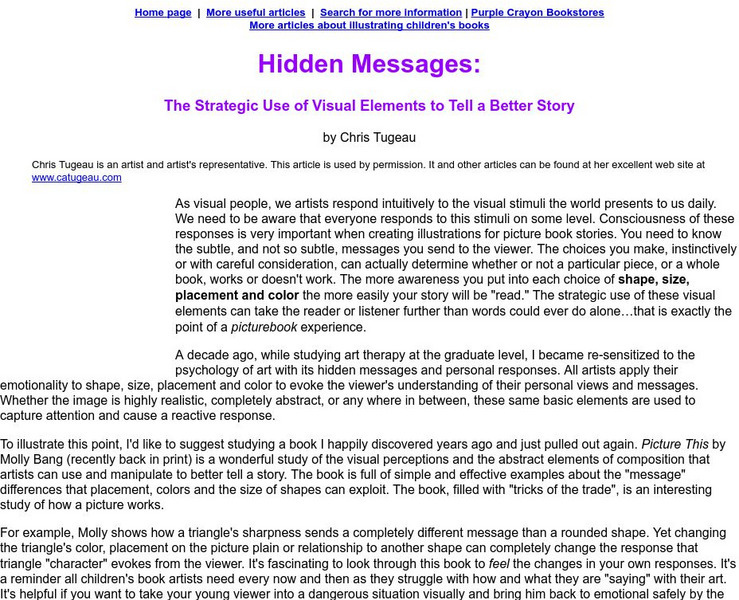
![Ga Virtual Learning: Time Periods [Pdf] Graphic Ga Virtual Learning: Time Periods [Pdf] Graphic](https://static.lp.lexp.cloud/images/attachment_defaults/resource/large/FPO-knovation.png)

